Can You Cover Up A Black Tattoo?
Revitalize your ink: Expert tips for seamlessly covering black tattoos with vibrant colors and new designs.
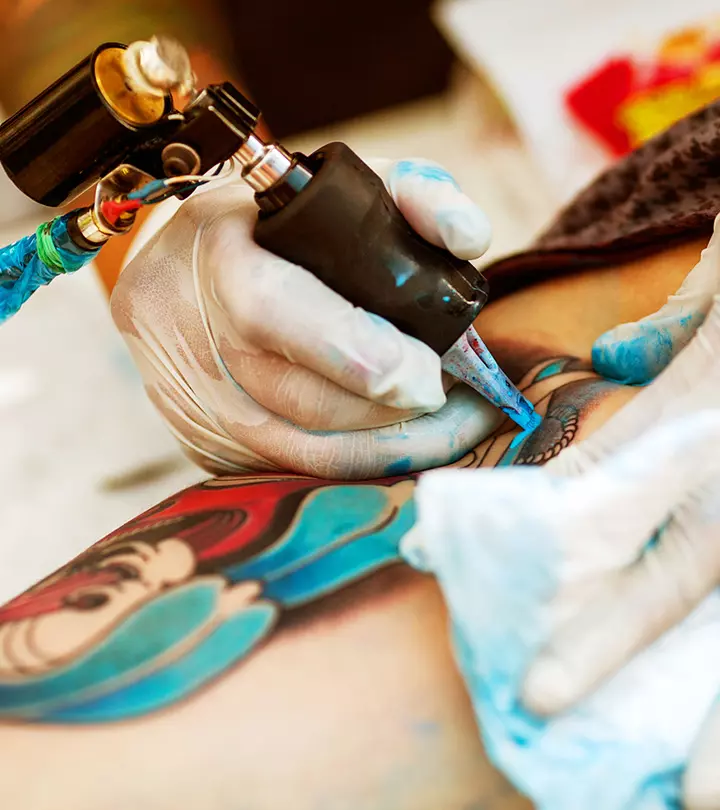
Image: Shutterstock
Tattoo cover-ups are a testament to the fact that not all is set in ink in the world of tattoos. Can you cover up a black tattoo? This question might lead you to envision a skilled artist meticulously working to camouflage an old piece with a new, vibrant design. The process is not just about slapping new ink over the old but involves a delicate technique of layering and color blending. Experienced tattoo artists are adept at this, working magic to turn once-regretted tattoos into works you can proudly display.
Transform your faded or outdated design into artwork that aligns with your current style and sensibilities with the right artist and approach. It blends creativity and technique, giving your ink a new look and meaning. This guide will navigate you through the process, considerations, and outcomes of giving your ink a second life. Scroll down to read more.
In This Article
Can You Cover Up A Black Tattoo With Color?
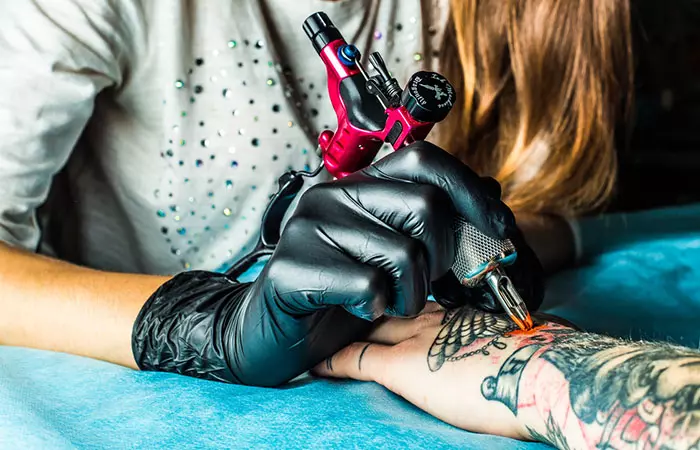
Revitalizing an old black ink tattoo with a splash of color is not just a wishful thought—it is a craft where tattoo designs meet a complex process. The key to a successful cover-up design is understanding that it is less about concealing and more about transforming the original design. Imagine your old tattoo as the underpainting on a fine art piece. Professional tattoo artists view the old tattoo ink as a dark tattoo underpainting, ready to be overlaid with a range of colors that bring out a new, vibrant image. The challenge lies in selecting shades that can stand out against the original black. When it comes to covering up a black tattoo, color choice is crucial. Can you cover up a black tattoo with color? Absolutely. Let us look at some of the colors that are typically used in the process.
Deep blue shades are excellent for blending into the black and are often used to create a new image that incorporates the darkness of the original tattoo (1).
Darker greens, such as forest or hunter green, can mask the black effectively. They are perfect for nature-themed cover-ups where foliage can be designed to cover the old lines.
Rich purples and violets can cover black tattoos nicely. They are often used in floral designs where the petals provide a natural shape for incorporating the black into shadows.
Browns and earth tones can be used for designs that need a natural or rustic appearance. They work well with black, especially in designs that involve animal portraits or landscape scenes.
Dark reds and oranges can be used effectively if the design allows for a darker interpretation of these colors even though they are brighter than other cover-up colors.
Incorporating these colors into a cover-up requires a skilled artist who understands how to use the existing black tattoo as a base for the new design. Tattoo artists often use the darkest colors in areas the black ink is densest to ensure complete coverage. Lighter colors may be introduced in areas where the original tattoo has faded or can be cleverly positioned to blend with the new design elements.
Covering up a black tattoo with color is not just about choosing the right shades; it is a multifaceted process that demands careful planning and execution. Here is how it is done:
- Consultation: First, schedule a consultation with a tattoo artist experienced in cover-ups. They will assess your existing tattoo, discuss your vision for the new design, and advise on color choices that effectively conceal the old black ink.
- Design Customization: The artist will create a custom design incorporating the old tattoo. This design will consider the original ink’s shape, size, and darkness to ensure seamless integration.
- Color Selection: Using high-quality, opaque colors is essential for sufficient coverage when covering black ink. Bright colors may not be effective. The artist will likely suggest deeper tones that mask the old tattoo while bringing your new, complex design to life.
- Color Layering: Covering a black tattoo often requires multiple layers of ink. The tattoo artist will skillfully overlay the new colors over the black, allowing each layer to heal before applying the next. This builds up opacity and ensures a solid cover-up. They might also use gradients and lots of shading techniques to transition from the old tattoo into the new colors seamlessly. This method can help give the cover-up depth and dimension while ensuring the old black tattoo is no longer visible.
- Touch-Ups: Once the main sessions are completed and the tattoo has healed, you might need a touch-up. This fine-tunes the colors, ensuring every inch of the black ink is effectively camouflaged.
Mizohican, a blogger, shared his experience of getting a tattoo cover-up and stressed the importance of touch-ups. He shared, “The makeover design covered up the old design nicely. But not for long. Within a couple of weeks, the new tattoo faded, and most of the Maori design and shadings completely disappeared!… Zuia also advised me that I should get this tattoo in different batches, waiting for each batch to heal first before the next sitting (i).”
Remember, patience is crucial. Covering up a black tattoo with color is an expensive process that cannot be rushed. It is a gradual transformation that unfolds over time, with each session bringing you closer to the vibrant, colorful tattoo you desire.
 Did You Know?
Did You Know?To effectively cover up an old tattoo with a new one, it is crucial to select the colors carefully and plan strategically. This will result in a better and longer-lasting tattoo. Let us take a look at some of the factors that can affect the success of your tattoo cover-up.
Factors That May Affect Your Tattoo Cover-up
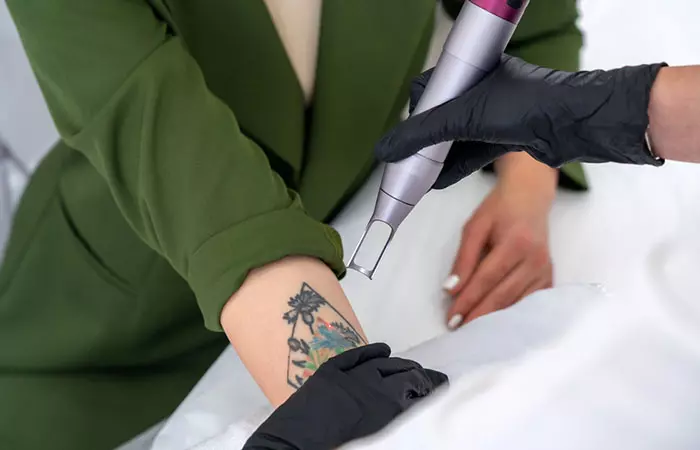
When considering if you can cover up a black tattoo with a new design, it is essential to understand the factors that can influence the outcome. Several factors can influence the success of your tattoo cover-up or turn it into a complex process. It hinges on several key elements, as follows:
- Original Tattoo Quality:The quality of the ink used in your original tattoo can make a big difference. High-quality ink that has not faded too much provides a more predictable base for the cover-up. Inferior quality ink, on the other hand, might spread or blur and present unique challenges. An experienced artist can assess this and plan the cover-up accordingly. The types of tattoos you have, whether they are fresh tattoos or pre-existing tattoos, can affect the outcome. Professional tattoo artists examine the original design and the depth of color applied to determine the best course of action—sometimes suggesting laser tattoo removal to lighten a dark tattoo before proceeding.
- Ink Density: Heavily saturated black tattoos might require more work to cover effectively (2). The density of the original ink can determine how many sessions you will need and which colors will work best. In some cases, a few laser removal sessions might be recommended to lighten the tattoo before attempting a cover-up.
- Tattoo Age: Older tattoos that have faded with time are generally easier to cover than fresh, dark ones. The natural fading process can make it easier for new ink to mask the old design. Plus, the skin has had time to heal fully, which can be beneficial when applying new ink over the top.
- Skin Health: Healthy, well-cared-for skin takes new ink better. If your skin is damaged or scarred over the tattoo area, it may affect how well the cover-up takes hold (3). Good skin care before the cover-up process can sometimes improve outcomes, so it is worth investing time in skin preparation.
- Artist Expertise: The skill level of the artist doing the cover-up is perhaps the most crucial factor. Experienced artists can work wonders, even with challenging tattoos. They bring a wealth of knowledge about ink behavior and design adaptation, which is invaluable for a successful cover-up.
- Design Complexity: A new design that is complex or uses strategic shading can be more effective in covering an old tattoo. Simpler designs might not hide the original ink as well. Often, artists will recommend a design that is busier or larger than the original to ensure complete coverage.
- Size And Placement: The size and location of your original tattoo also play a role. Larger tattoos or those in places where the skin stretches or moves a lot might pose more of a challenge. Areas such as the elbows or knees, where the skin often moves, may affect the healing process and thus, the final appearance of the cover-up.
Understanding these factors can help set realistic expectations for your tattoo cover-up journey. With these points in mind, you can work together with your tattoo artist to accomplish a cover-up that results in a piece of art you are proud to display.
 Trivia
TriviaWe learnt what points to factor in before getting a tattoo cover-up. But there is an elephant in the room – pain. Let us delve into the pain levels to be expected while getting a cover-up tattoo in the next section.
Do Cover-Up Tattoos Hurt More?

When it comes to getting a cover-up, a common query is whether the extensive experience is more painful than getting the original tattoo. The answer is not entirely straightforward if you are wondering whether you can cover up a black tattoo without added discomfort. Generally, a cover-up tattoo might involve more discomfort, as it often requires retouching a layer of skin that’s already been worked on. Skilled tattoo artists will use their tattooing technique to blend new tattoo ink into a larger tattoo, which can sometimes be more sensitive than the untouched skin during the original session.
Moreover, if the original tattoo has led to any scarring, the needle’s movement over scar tissue can feel different than it did over untouched skin. Scar tissue is less elastic and can be more sensitive, which may lead to a heightened pain sensation during the cover-up session. The artist might also need to use more pressure or go over areas repeatedly to ensure the cover-up ink takes hold and the old tattoo is sufficiently masked.
Furthermore, cover-ups may take longer than the initial tattoo, as the artist covers every trace of the old design. The prolonged exposure to the tattoo needle can contribute to discomfort. The type of ink and the complexity of the new design can also affect how the skin reacts during the cover-up process.
Pain tolerance varies widely from person to person, so while some might find the cover-up process to be a bit more uncomfortable, others may not notice any significant difference (4). It is also worth noting that the location of your cover-up can affect pain levels. Areas with thin skin or close to bones, such as ankles or wrists, might experience more pain during a cover-up than fleshier areas like the thigh or upper arm.
In addition, the state of mind and stress levels of the individual can play a significant role in pain perception. Being relaxed and choosing a comfortable environment for your tattoo session can make a considerable difference in how much pain you feel. Some people opt for breaks during the session or use topical numbing agents with their artist’s approval to manage the discomfort. Communicating with your tattoo artist about your concerns will help them adjust their technique and ensure you’re as comfortable as possible throughout the session.
Aftercare for a cover-up tattoo is also crucial, as properly cared-for skin can heal faster and with less pain (5). Remember to follow your skilled tattoo artist’s aftercare instructions meticulously to ensure a smooth healing process and the best possible results for your new artwork.
After enduring the pain and following aftercare instructions, you earn the right to show off your beautiful tattoo design. So, how long before it is ready for the world to see? Check it out in the section below.
How Long Does It Take To See Results Of Coloring Over Black Tattoos?
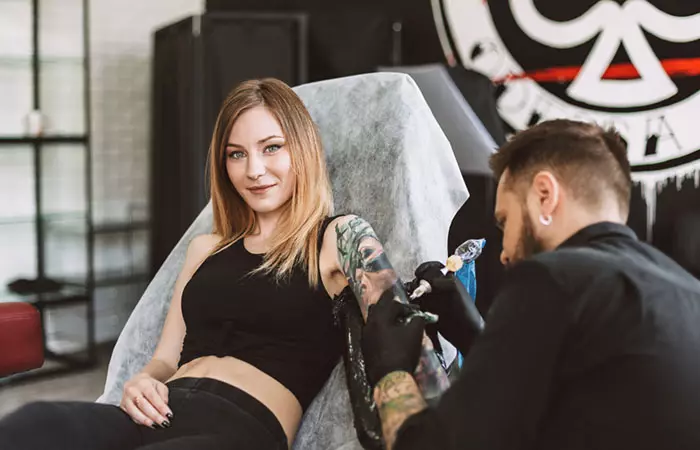
After deciding to revitalize an old piece of ink, you might wonder how long it will be before you can flaunt your new artwork. When you cover up a black tattoo with color, the journey to the final result is a bit of a waiting game. Initially, right after your tattoo session, you will see a glimpse of the transformation. However, this is not the final appearance. Your skin needs time to heal, and as it does, the actual colors and design will settle into place.
The time it takes to see the results of coloring over a black ink tattoo will vary. A complex design with multiple layers of skin involved in the cover-up design can extend the healing time. Following the professional tattoo artist’s aftercare advice is crucial for seeing the full range of colors and the true outcome of the cover-up design.
Typically, a tattoo can take a few weeks to a few months to fully heal. During the healing phase, the colors might appear clouded by the healing skin layers. As the skin regenerates and the swelling diminishes, the vibrancy of the new colors will start to shine more clearly. It is also worth noting that larger tattoos, or those with more intricate designs, may require multiple sessions to complete the cover-up, extending the timeline before you see the definitive outcome.
Each session will bring incremental changes as your artist layers colors, adjusts details, and enhances the design. After the final session, give your skin the time it needs to recover. Patience truly is a virtue here, and the waiting process is an integral part of the tattoo journey. Trust in the process, care for your tattoo as recommended by your artist, and soon enough, your tattoo’s new, colorful version will be revealed in its full glory.
The journey to cover up a black tattoo is as much about patience as it is about ink and artistry. This transformative process isn’t just about hiding the past; it is about redefining it. Your once unwavering black tattoo becomes a vibrant canvas reflecting your tastes, experiences, and personal growth.
As you embark on this path, remember that successful cover-ups take time and expertise. Choosing the right artist, allowing for appropriate healing periods between sessions, and caring for your tattoo afterward are all critical steps to ensuring your refreshed ink settles in just as you envisioned. So, wear your new tattoo with pride, knowing that beneath the colors lies a tale of change, creativity, and the enduring spirit of transformation.
Frequently Asked Questions
Can I tattoo white over black ink for a cover-up?
No. Tattooing white over black ink for a cover-up can be a challenging process. While white ink might not completely conceal a black tattoo, it can be used for highlights or to soften the appearance of the original ink when creating a new design.
Can a black tattoo be lightened?
Yes, a black tattoo can be lightened, often through laser tattoo removal treatments. These treatments break down the ink particles, making it easier to cover with new ink. It is a common first step before covering up a heavily inked area.
Can I cover up a black tattoo with makeup?
Yes, but covering up a black tattoo with makeup is a temporary solution. Specialized products are designed to provide full coverage that can mask tattoos for a short period. However, this is a temporary fix and requires regular application. If you are interested in learning more about how to cover a tattoo with makeup, there are various techniques, products, and YouTube tutorials that can help you achieve the desired look.
Do certain colors work better for covering black tattoos?
Yes, certain colors do work better for covering black tattoos. Typically, darker shades such as deep blues, purples, and greens are more effective for cover-ups as they can better mask the dark underlying ink.
Can vibrant colors effectively cover dark or heavily inked areas?
Yes. Vibrant colors can cover dark or heavily inked areas, but this often depends on various factors, including the type and quality of the ink used, as well as the skill of the tattoo artist.
Can I cover a large black tattoo with lighter colors successfully?
Yes, covering a large black tattoo with lighter colors can be successful, but it often requires using those lighter shades in conjunction with darker colors to create the necessary contrast and coverage. However, with blackout tattoos, the process can be more challenging due to the density of the black ink.
Do cover-up tattoos require more aftercare than regular tattoos?
Yes. Cover-up tattoos often require more aftercare than regular tattoos due to the additional layers of ink and the complexity of healing. It is important to meticulously follow the tattoo artist’s aftercare instructions to ensure proper healing.
Can a cover-up tattoo be smaller than the original black tattoo?
Yes. Depending on the design and placement, a cover-up tattoo can sometimes be smaller than the original black tattoo. However, in most cases, cover-up tattoos tend to be larger to ensure complete coverage of the original ink.
Key Takeaways
- Covering a black tattoo with color breathes new life into old ink, allowing for artistic reinvention and personal expression.
- Darker, more opaque ink colors are best for covering black tattoos.
- Key factors such as the original tattoo’s ink quality, age, and depth of color impact the effectiveness of a cover-up.
- Cover-up tattoos may cause more discomfort than original tattoos due to multiple sessions over sensitive, previously inked skin.
- The healing process for cover-up tattoos can take several weeks to months, and patience is essential for the best results.
- Professional tattoo artists with skilled techniques are crucial for successful cover-ups, especially for complex designs.
Illustration: Can You Cover Up A Black Tattoo?

Image: Stable Diffusion/StyleCraze Design Team
Covering up a tattoo is not an easy feat and it comes with a lot of concerns and precautions. Check out the following video to learn more about tattoo cover-up and the dos and don’ts associated with it.
Personal Experience: Source
StyleCraze's articles are interwoven with authentic personal narratives that provide depth and resonance to our content. Below are the sources of the personal accounts referenced in this article.
(i). Chp 684. Tattoo Makeover Makeoverhttps://mizohican.blogspot.com/2017/11/chp-684-tattoo-makeover-makeover.html
References
Articles on StyleCraze are backed by verified information from peer-reviewed and academic research papers, reputed organizations, research institutions, and medical associations to ensure accuracy and relevance. Read our editorial policy to learn more.
- In Vitro Spectral Analysis of Tattoo Pigments
https://onlinelibrary.wiley.com/doi/abs/10.1111/j.1524-4725.2007.34096.x - Tattoo Ink Nanoparticles In Skin Tissue And Fibroblasts
https://www.beilstein-journals.org/bjnano/articles/2190-4286-6-120 - Tattoo-Associated Dermatoses: A Case Report and Review of the Literature
https://onlinelibrary.wiley.com/doi/abs/10.1046/j.1524-4725.2002.02066.x - Gender Differences In Subjective Pain Perception During And After Tattooing
https://www.mdpi.com/1660-4601/17/24/9466 - Aftercare Should Not be an Afterthought Current Tattoo Aftercare Methods
https://journals.lww.com/jdnaonline/FullText/2015/07000/Aftercare_Should_Not_be_an_Afterthought__Current.2.aspx
Read full bio of Rodrigo Casco
Read full bio of Subhrojyoti Mukherjee
Read full bio of Pahul Nanra








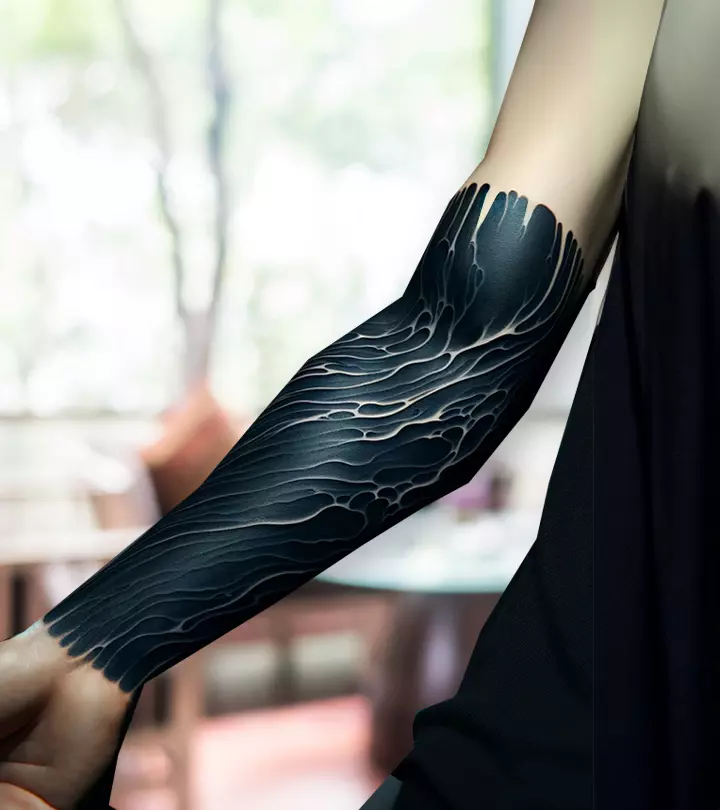
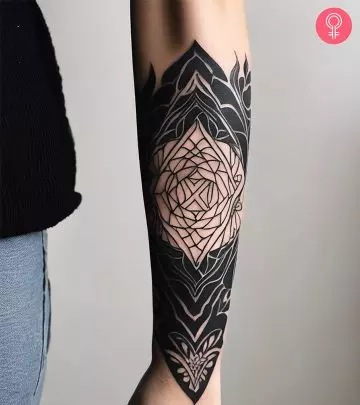

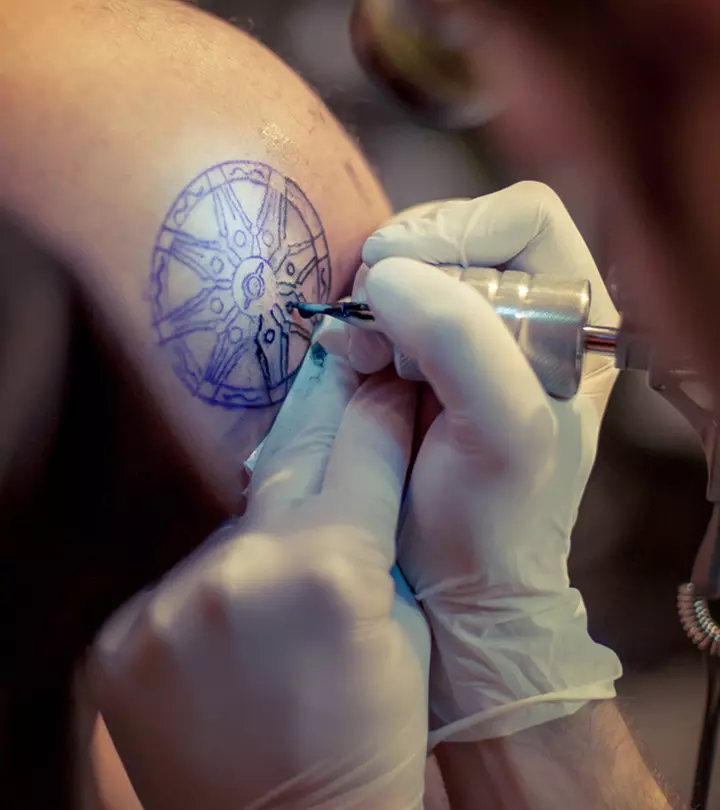





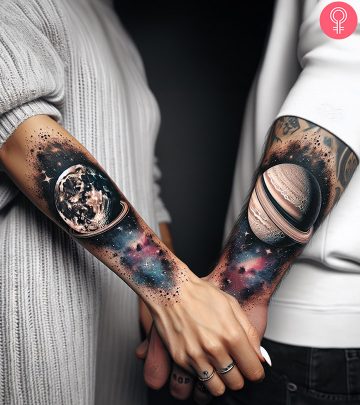






Community Experiences
Join the conversation and become a part of our empowering community! Share your stories, experiences, and insights to connect with other beauty, lifestyle, and health enthusiasts.